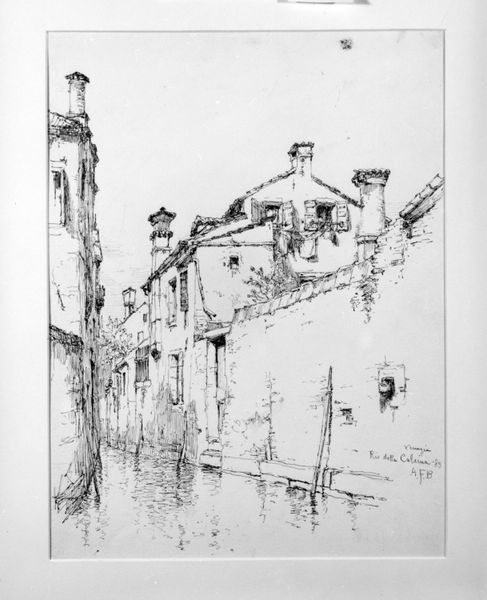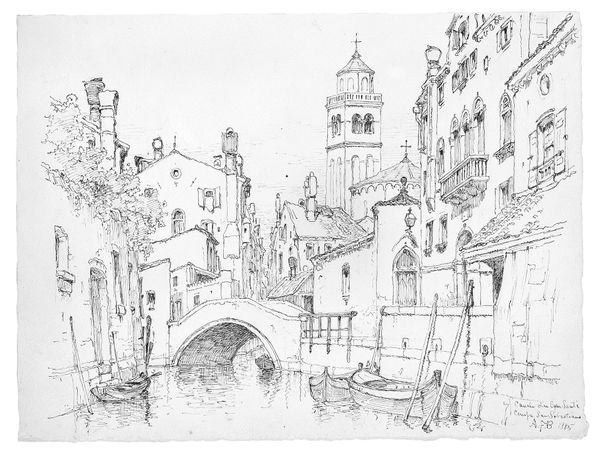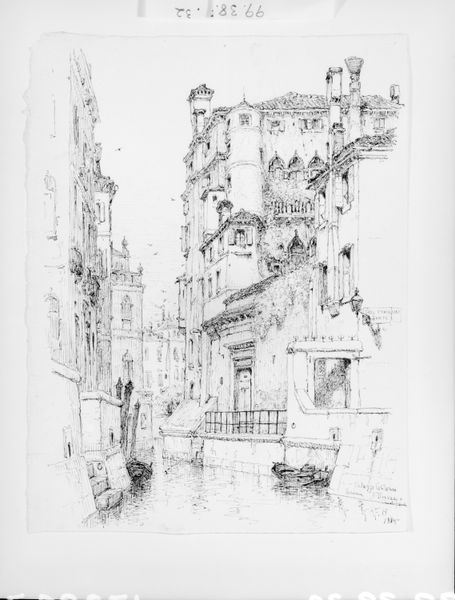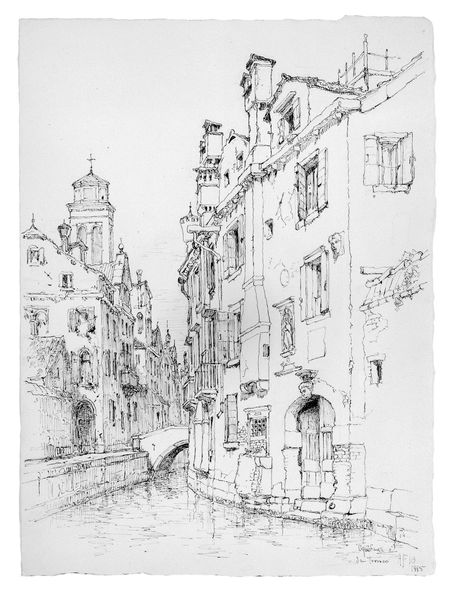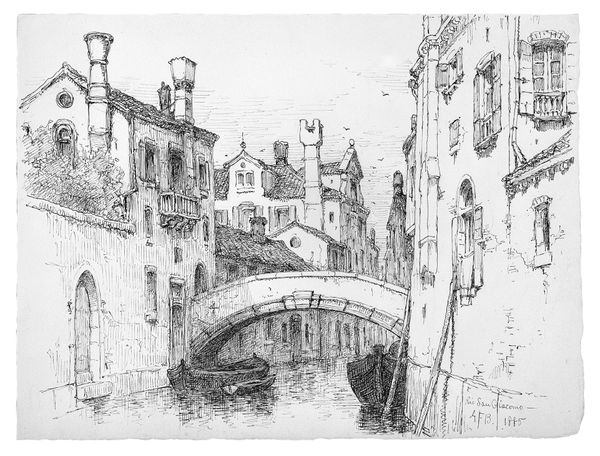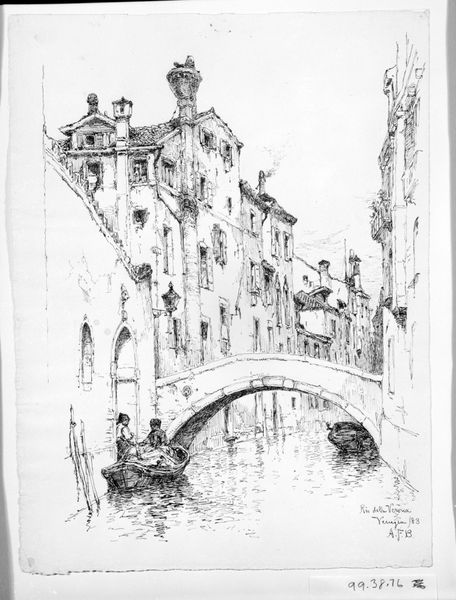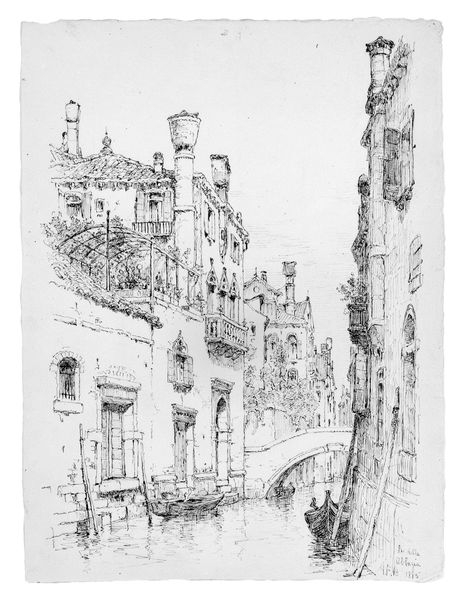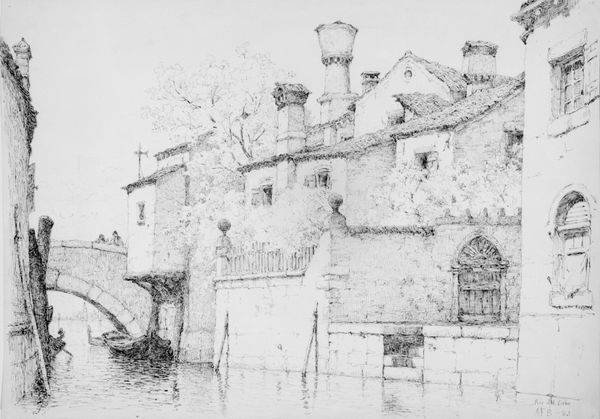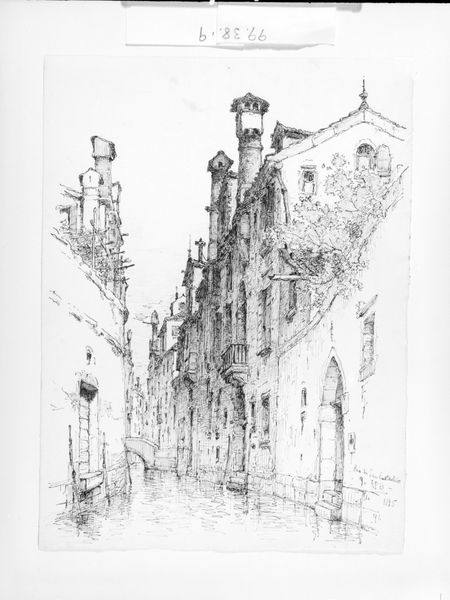
Dimensions: 9 3/4 x 12 15/16 in. (24.8 x 32.9 cm)
Copyright: Public Domain
Curator: Andrew Fisher Bunner's "Vicino San Giovanni e Paolo, Venice," dating from 1883, offers a glimpse into the quieter corners of Venice through the immediacy of ink on paper. Editor: My first impression is one of stark beauty. The architectural detail, rendered entirely in ink, captures a unique atmospheric stillness, doesn’t it? Almost melancholic. Curator: It's fascinating how Bunner leverages the monochrome medium. Notice how he orchestrates value, manipulating stark contrasts to give shape to the light as it cascades down the building facades. It also seems to be the artist's attempt at engaging with realism. Editor: Absolutely, and I see in that play of light and shadow the layered social strata of Venice itself. Water, essential yet potentially dangerous, reflects a world where fortunes could rise and fall quickly. The closed shutters, the narrow passageways, everything suggests hidden lives, obscured histories... Curator: An intriguing point, I concur, but can we consider also how this perspective flattens the space, yet highlights the receding planes? Observe the acute precision with which he articulates architectural features, thus conveying both solidity and ephemerality simultaneously. It exemplifies Venetian painting tradition but also, an interesting turn into the art movement. Editor: But this isn’t merely documentation of "architectural features"; it reflects how marginalized communities navigated, survived, even thrived within this labyrinthine environment. Think of the limited public spaces. These private views onto the canals might have served as sites of resistance, negotiation, or simply unauthorized exchange, economic or otherwise. Curator: A point of consideration but can we analyze how Bunner controls the medium, building complexity with incremental mark-making. Each line adds density, yet somehow it maintains its fragile delicacy, especially in capturing light refraction from the canal waters. The contrast is simply, poetic. Editor: True, there is poignancy but at what cost, right? I wonder what an exhibition would look like curated to unearth the names and histories erased from these serene urban scenes. Who maintained these structures and how might we reimagine our experience of space by remembering and accounting for it. Curator: It certainly prompts deeper consideration. Bunner’s drawing, though seemingly straightforward, really captures the delicate dance between realism and atmospheric effects that characterizes the art. Editor: Yes. And perhaps that "dance," as you've so eloquently put it, needs re-choreographing to account for those stories which often remain outside of our frames of perception.
Comments
No comments
Be the first to comment and join the conversation on the ultimate creative platform.


